5月は初めて日本に留学しました。東京と名古屋と京都と大阪へ行きました。これは京都市についてブログです。読んでください。
2014年5月20日(火)
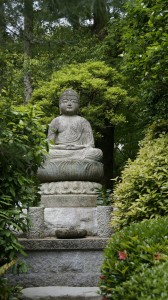
We boarded the ひかり (Hikari) shinkansen again to head for the historic and cultural heart of Japan: Kyoto. Upon our arrival, we immediately went to 龍安寺 (りょうあんじ/Ryouan-ji), a UNESCO World Heritage Site, and saw its famous Japanese Zen garden. This particular garden is considered the finest example of 枯山水 (かれさんすい/”dry landscape” gardening). These type of gardens are designed to imitate the essence of nature and serve as an aid to meditation. I’ve always pictured this particular garden as small islands among a vast sea. The surrounding temple grounds were just as gorgeous.
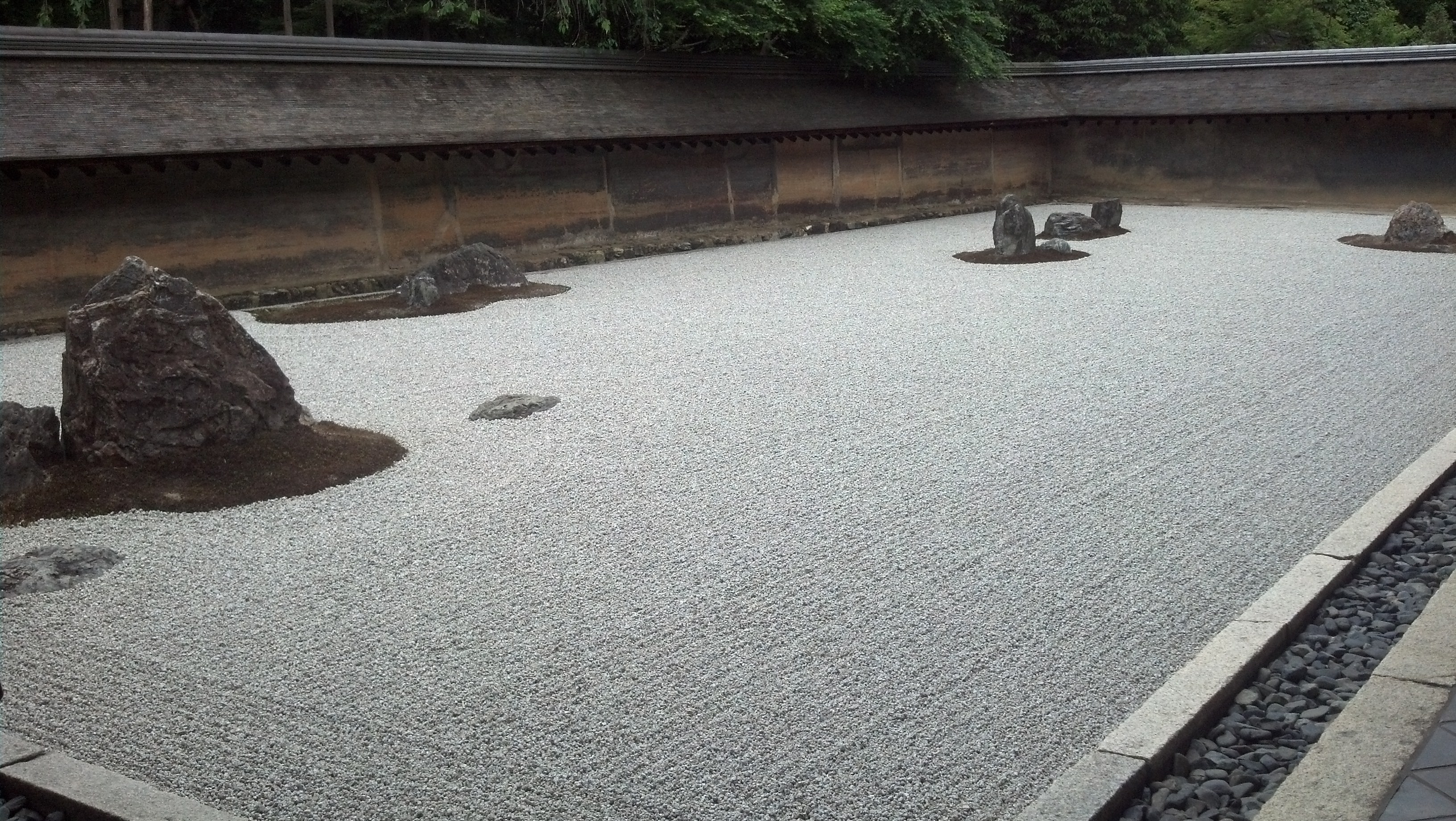
Nearby was also 金閣寺 (きんかくじ), or the Golden Pavilion. This is probably one of the most famous sites in Japan. For me, it is definitely one of the first that comes to mind when I think of Kyoto. The building itself is three stories, with the top two covered in pure gold leaf.

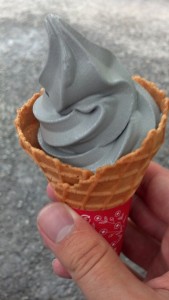
For the Pokémon fans out there, like myself, it is interesting to known that this is the home of ホウオウ(Ho-Oh). Ecruteak City is representative of Kyoto in the Pokémon world. The Golden Pavilion also has a Pokémon equivalent. The Bell Tower/Tin Tower, where Ho-Oh can be found and captured.
I guess it would be safe to assume that 銀閣寺(ぎんかくじ), the Silver Pavilion, served as the basis for the Burned Tower in the Pokémon series. However, in reality, it was the Golden Pavilion which burned to the ground in 1950 by a monk. The Golden Pavilion as we known it today is the reconstruction of it from 1955. Very symbolic of a phoenix who is reborn from ashes.
2014年5月21日(水)
The following day was a special one. As part of our printmaking class and service learning project, when went to visit Richard Steiner, a professional woodblock printmaker. Originally from America, he’s been living in Japan and studying woodblock printing since 1970.
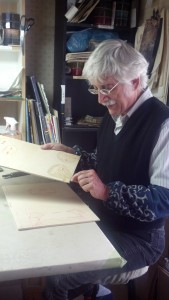
He studied under woodblock print master, Masahiko Tokumitsu. Originally imitating the representational black-and-white style of his teacher, Steiner has since adopted colorful abstract themes into his work. After years of study, Richard Steiner was given an artistic license and the artistic name of Tosai. Today, Steiner also teaches at 京都精華大学 (きょうとせかいだいがく/Kyoto Seika University. He also heads the Kyoto International Woodprint Association (KIWA).
His quaint studio is located in central Kyoto in a 町や (まちや/townhouse) with 畳 (tatami) floors and sliding 障子 (しょうじ/shouji) doors. Within this space, he covered a brief history about 木版画 (もくはんが/woodblock prints) and shared with us techniques used in the woodblock printing process. However, since his space was too small to accommodate the entire class, it was necessary for us to break up in groups. Therefore, a good part of the day was spent exploring the surrounding neighborhood of 中京区 (なかぎょうく/Nakagyou-ku).
2014年5月22日(木)
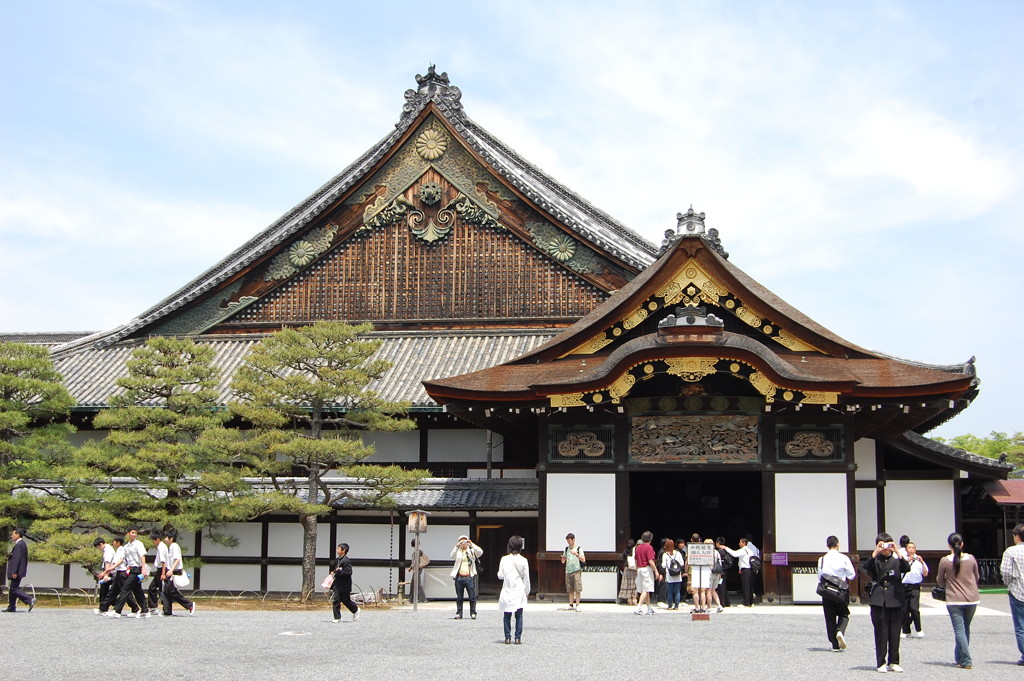
The following day we went to 二条城 (にじょうじょう/Nijou Castle), another UNESCO World Heritage Site, in the morning. On the way there, I had a “Justin Beiber” moment, when I waved to some passerby school girls and then they all unanimously squealed. That was a little surreal.
The castle itself is similar to Nagoya Castle, although, a little smaller. The architecture lends itself very well to the social hierarchy of the Edo period. Therefore, there was many informative displays showcasing this.

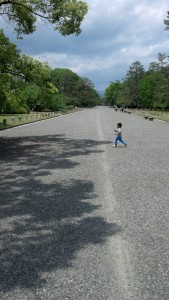
After Nijou Castle, we headed for the 京都御所 (きょうとごしょ/Kyoto Imperial Palace). It was the former residence of the Emperor and his family in Kyoto until 1868 when they moved to Tokyo. The palace that exists today is the reconstruction of it in 1855 after it had burned down. Situated within 京都御苑 (きょうとぎょえん/Kyoto Imperial Park), the palace grounds are enormous. I can’t stress how huge this place is.
Within the Kyoto Imperial Palace, the class went on a guided tour. We learned a lot about the castle architecture and daily lives of the royal family. For example, the roof is created using a special bark from a Japanese cypress called 檜 (Hinoki) and the color vermilion is used in 神道 (しんとう/Shinto) to ward off bad spirits. Something I found particularly interesting is that a notch is created in the northeast corner of the palace walls to prevent bad spirits from entering the palace grounds. This is because the northeast is believed to be where they originate from. Also, red tatami is used for lower social status, while white tatami is used for higher class.
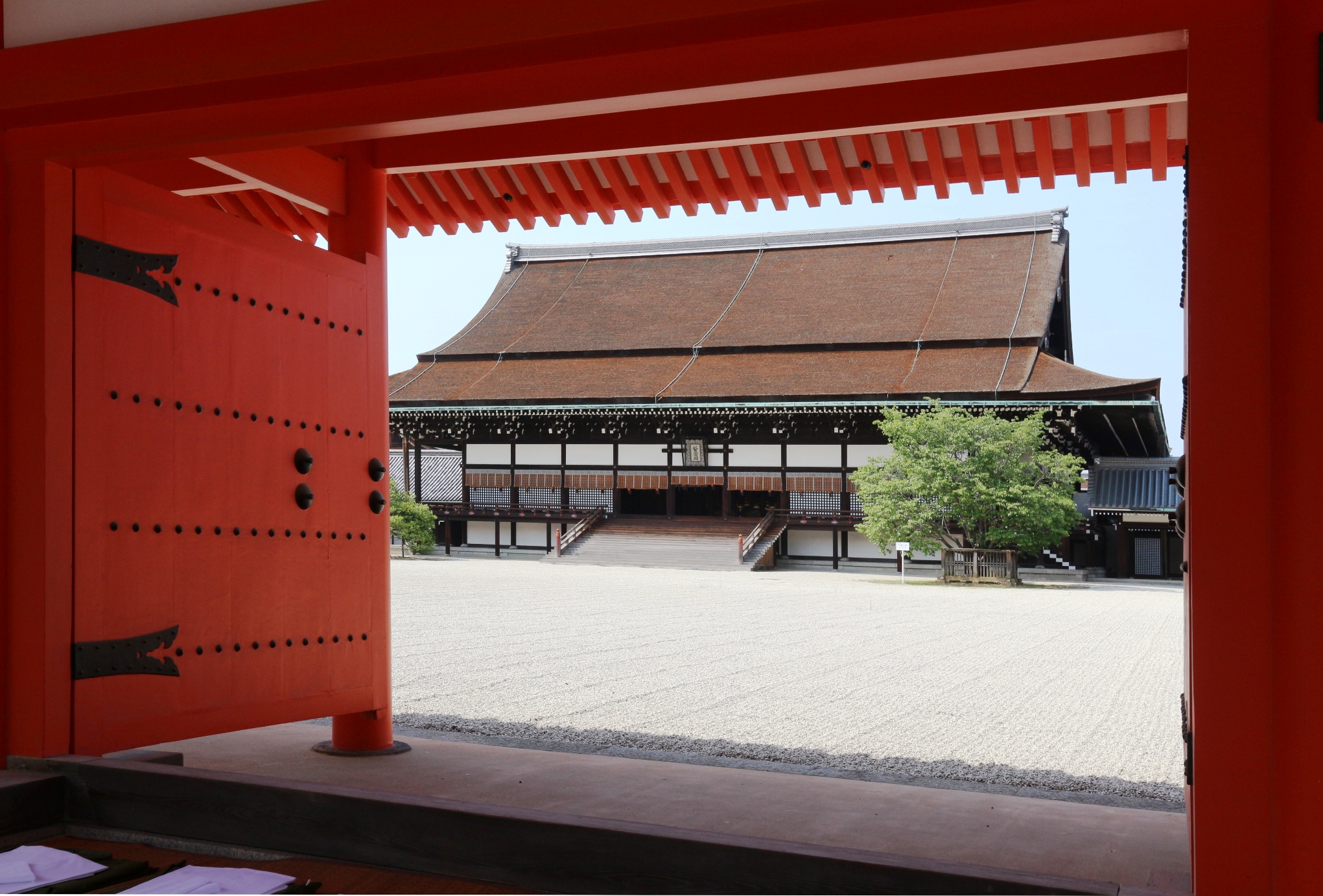
That night, the class headed to 祇園 (ぎおん/Gion), a district formed in front of the 八坂神社 (やさかじんじゃ/Yasaka Shrine). Gion is well-known for the 芸者(geisha) and their apprentices, the 舞子 (maiko), who walk its streets at night. I was lucky enough to see three maiko walking down the streets. Seeing them in person is actually a pretty awe-inspiring experience.
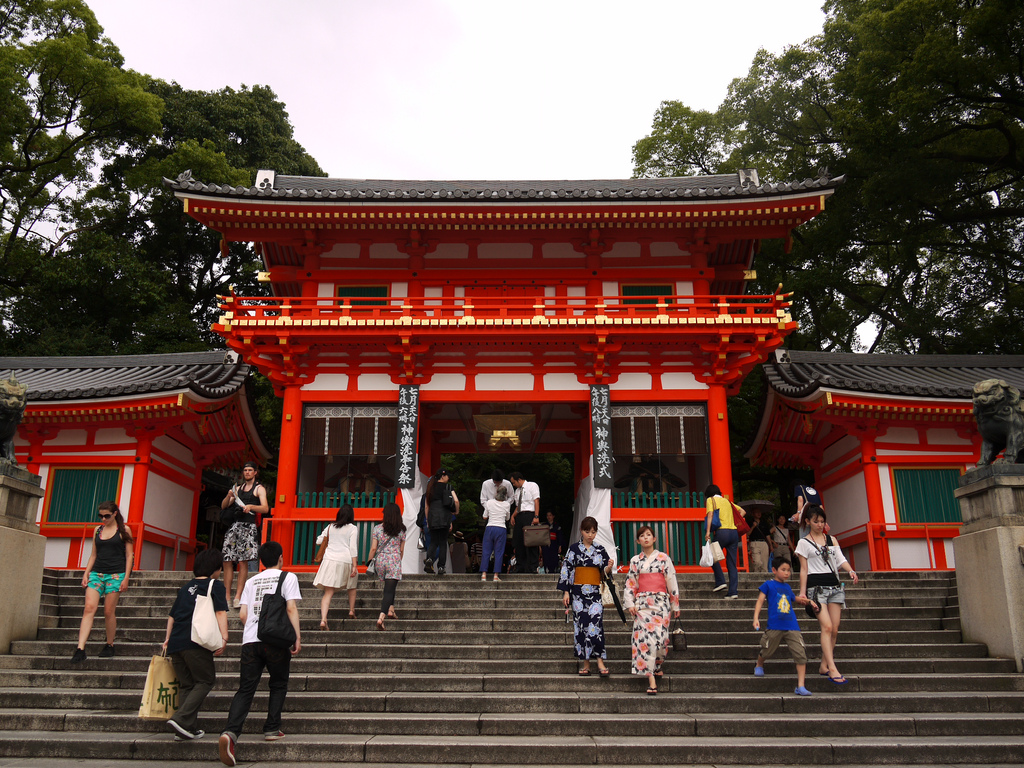
I loved being in Gion. Kyoto for the most part has a quiet a night life in comparison to Tokyo and Nagoya. However, Gion is where Kyoto comes to life at night. I would love to return to Gion in the future.
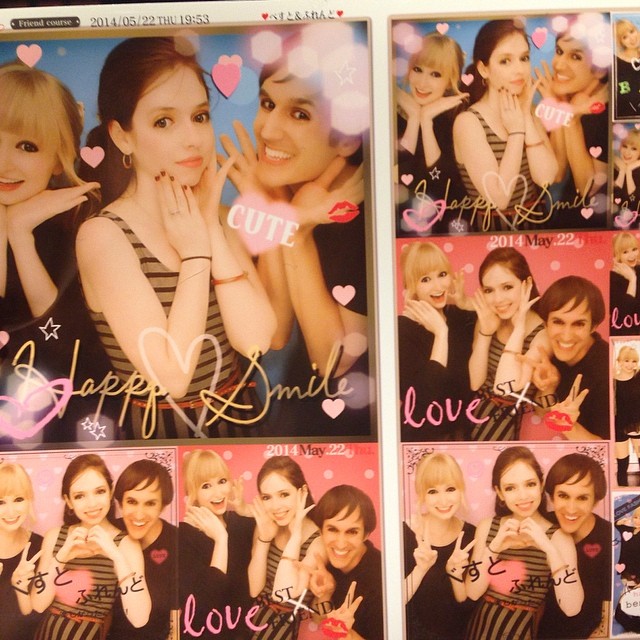
2014年5月23日(金)
Kyoto Seika University, the school Richard Steiner teaches at, is another college we got to tour during our stay in Japan. I was happy I got the opportunity to visit some colleges since I’m exploring options for the MEXT Scholarship. Something which I may or may not apply for in the near future.
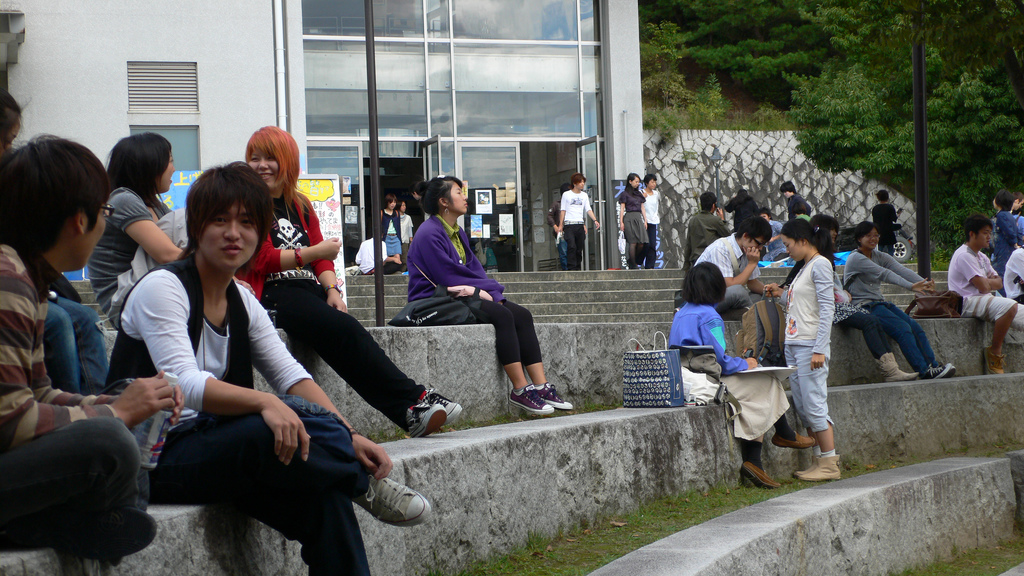
Kyoto Seika University was particularly interesting since it offered many fields of study within new media: animation, manga, photography, etc. Of course, printmaking as well, which got some of the study abroad students very excited. It really seemed like a school out of ハチミツとクローバー (Honey and Clover). While visiting, there was a group of high school students learning to make 和紙 (washi) paper. As アメリカ人(アメリカじん/Americans), we were quite popular among the high school students.
Later that evening, I was determined to see 任天堂株式会社 (にんてんどうかぶしきがいしゃ/Nintendo Co., Ltd.), headquartered in Kyoto. With a little research, I discovered that Nintendo was located not far from the hotel. Two friends joined me on my quest. It was surprisingly easy to find! There was two buildings. One was obviously an older building, while the other, Nintendo Research and Development, looked much newer.
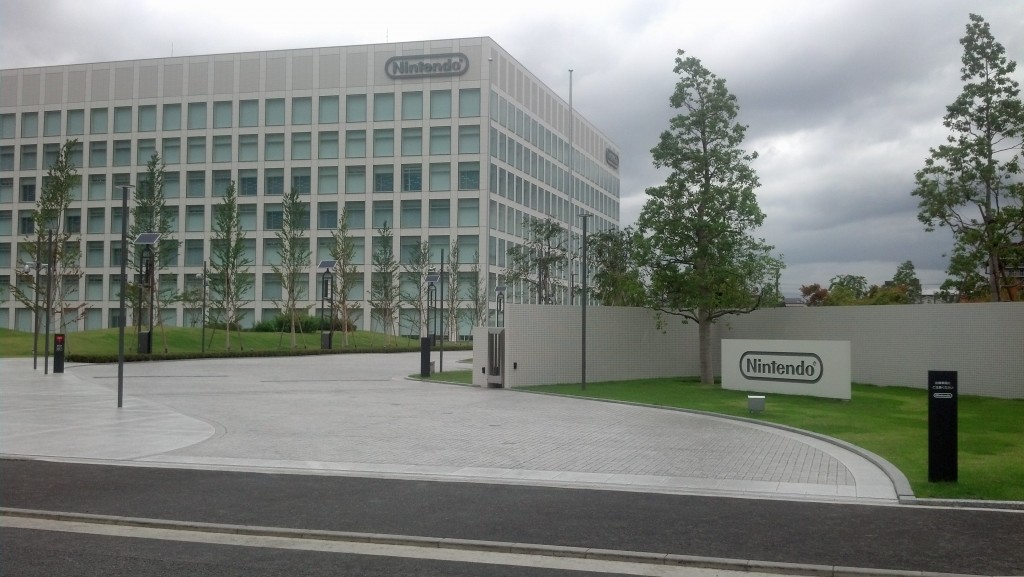
With the sun setting in the background and through the rose-tinted glasses of a fan, the cubical, white buildings probably looked more amazing than in reality. The locals obviously knew what we were up to, since they were all grinning from ear to ear as they walked past. There was even a little old woman giggling as she was walking her dog.
2014年5月24日(土)
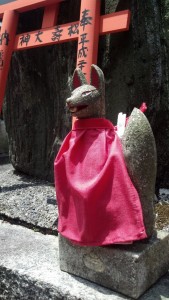
On our last day in Kyoto, once again the familiar band of adventurers assembled and we head for the 伏見稲荷大社 (ふしみいなりたいしゃ/Fushimi Inari Shrine)。This is the head shrine for the fox diety known as Inari, who also apparently loves fried tofu. いなり寿司 (いなりずし/Inari sushi) is sushi rice in fried tofu. きつねうどん (literally “fox udon” ) is udon noodles with fried tofu. As the god of rice, it is no wonder the Japanese people love him so much.
The Fushimi Inari Shrine isn’t far from Nintendo headquarters actually. In fact, Shigeru Miyamoto said that the shrine helped with the conception of Star Fox and the series’ main character Fox McCloud.
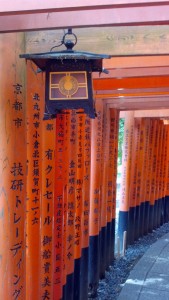
Aside from foxes, this shrine has lots and lots of 鳥居 (とりい), traditional Japanese gates. There is apparently over 10,000 of them, each one donated from a company or organization. Walking through a tunnel of vermilion-colored gates is not only beautiful, but also other-worldly. There truly is no other place like it. I’m proud that I was able to make it all the way to the top of the hill and see as much of the shrine as I could. I may return to enjoy it more when I return to Kyoto this July.
このブログは以上です。ご視聴、ありがとうございました。